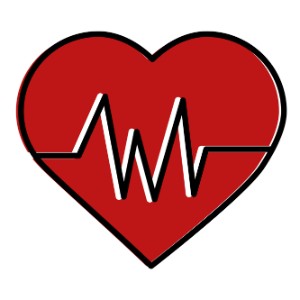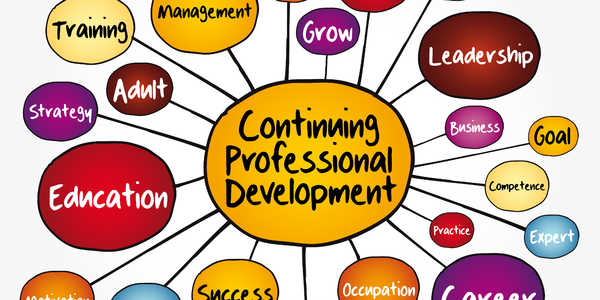Trainers and Fitness Professionals have so much influence with their clients.
Wait, that’s you!!!
As Fitness Professionals, you have a front and center position of authority and influence with the people who hire your services…whether attending your class, joining your gym, or hiring you to create personalized programs for them, these are people looking to you for guidance. As such, you have an enormous opportunity to positively impact each of these people every time you interact with them, especially when they are in your care and they’ve received news from their docs!
When clients receive news from the doc
So many of our clients have received news from their health care practitioners regarding blood pressure (BP) test results, and generalized actions to take with regard to those results. But, many of these clients don’t really know what those actions can look like in a daily activity perspective. The translation between a broad-stroke, indiscriminate set of guidelines given to them by a health care professional and specific, customized instructions on daily practices can fall directly in your purview.
You have the tools to help them create a very detailed and action-oriented plan to generate sustainable results…read on for some info that can help augment your current knowledge level!
The following is compiled by June M. Chewning BS, MA and is from “Blood Pressure, Hypertension, and Exercise,” a continuing education course offered by NAFC.
Did you know as a health-fitness professional you can have a positive affect on a client’s health, longevity, and brain function by simply helping them prevent and manage hypertension? The good news is that it is easy- just get them to exercise regularly! The influence of exercise on blood pressure is significant, and for most clients promoting healthy blood pressure is as easy as learning how to assess BP, prescribe regular exercise, and re-assess BP. Almost every client with elevated BP will see results with regular exercise…so why not be the BP hero?
To be a BP hero, it is important to be educated in the anatomy of BP, how BP works, how to assess BP, BP disease exercise warning signs, and what has a positive effect on maintaining a good BP or lowering an elevated BP. This article gives you a snapshot insight into the fascinating world of blood pressure and exercise.
The body delivers vital oxygen and nutrients and removes waste and metabolic by-products through the combined effort of the cardiovascular and respiratory systems, referred to in combination as the cardiorespiratory (CR) system. The lungs in the pulmonary system are of particular interest as the closed loop vascular system passes through the lungs to pick up oxygen and dispose of carbon dioxide. The success of this closed-loop system relies heavily on a delicate balance to provide effective distribution of blood to virtually all organs and cells in the body.
The proper function of the cardiorespiratory system, and the ability of blood to continuously loop though the system, depends on maintaining the proper pressure in the vessels and organs of the cardiorespiratory system. The pressure is primarily controlled by the vascular system. The pressure maintained in the CR system is measured and monitored by blood pressure.
Blood Pressure is defined as the pressure/force exerted on the arterial walls with each heart beat. (Cleveland Clinic 2019) Blood pressure can be measured directly by a catheter in the artery, or indirectly with a blood pressure cuff and sphygmomanometer. Two pressures in the arteries are measured to determine blood pressure:
- Systolic Blood Pressure (SBP): represents the highest pressure (against the artery walls) in the artery occurring during ventricular systole, or ventricular contraction, and ventricular blood ejection.
- Diastolic Blood Pressure (DBP): represents the lowest pressure (against the artery walls) in the artery occurring during ventricular diastole, or ventricular relaxation, which allows the heart to refill.
Blood pressure is the amount of force (hydrostatic pressure) that pushes the blood through the vascular system. Pressure drops gradually as the large arterial vessels branch resulting in lower venous pressures (compared to artery pressure) as the blood progresses through the closed loop system. Blood pressure and associated measures are commonly expressed in millimeters of mercury or “mmHg.”
BP is expressed by ventricular systole over ventricular diastole, for example 120/80. Blood pressure does not remain constant and varies throughout the day or over time in the aging process depending on many factors including exercise, stress, body position, medication, cardiovascular condition, respiratory health, proper hydration, and age.
Fun Fact #1
Blood Pressure depends primarily on body size.
So, children and young adolescents have much lower blood pressures than adults. (Kenney 2019)
|
Current Guidelines for BP Classification and Management – American Heart Association 2019 (www.heart.org)
|
|
Systolic BP
|
Diastolic BP
|
Classification
|
*Recommendations
|
|
<120 and
|
<80
|
Normal
|
Healthy lifestyle choices and yearly checks.
|
|
120-129 and
|
<80
|
Elevated Blood Pressure
|
Healthy lifestyle changes and reassessed in 3-6 months
|
|
130-139 or
|
80-89
|
High Blood Pressure Stage I
|
10 year heart disease and stroke risk assessment. If less than 10% risk, lifestyle changes and reassessed in 3-6 months. If higher after reassessment, lifestyle changes and medication with monthly follow-ups until BP is controlled.
|
|
≥140 or
|
≥90
|
High Blood Pressure Stage II
|
Lifestyle changes and 2 different classes of medicine, with monthly follow-ups until BP is controlled.
|
|
*Individual recommendations need to come from health care provider.
Source: American Heart Association’s Journal Hypertension published November 13, 2017.
|
Hypertension is defined as:
“Having a resting systolic blood pressure (SBP) >140 mmHg and/or a resting diastolic blood pressure (DBP) >90 mmHg, confirmed by a minimum of two measures taken on at least two separate days, or taking antihypertensive medication for the purpose of blood pressure control.” (ACSM 2018)
This chronic medical condition is called the “silent killer” because there are typically no symptoms. Learning how to assess BP for your client can put you forefront in the fight to detect and fight this deadly chronic disease. Elevated blood pressure can increase the risk for coronary artery disease, stroke, heart attack, kidney disease, peripheral artery disease, and heart failure. There are both genetic and lifestyle factors that can affect the development of hypertension.
A client with hypertension should engage in regular exercise after their blood pressure is effectively controlled. Exercise to control and manage high blood pressure should only be initiated after the client has seen their health care professional and is under medical supervision and treatment. Systolic blood pressure can increase significantly during exercise, so the client coming to you with high blood pressure should not exercise without medical clearance.
Fun Fact #2
Hypertension causes the heart to work harder than normal at rest and with activity because it must pump blood from the left ventricle against a greater resistance in the arteries. (Kenney 2019)
The American Heart Association updated guidelines recommend treatment options including lifestyle changes and blood pressure lowering medications. The lifestyle modifications for those with hypertension can lower systolic approximately 4 to 11 mmHg with the largest impact from diet and exercise. (Whelton et al., 2017)
It is well documented in research that even light-moderate exercise can help control and lower blood pressure if you have hypertension. The World Health Organization (WHO) recommends a minimum threshold of 150 minutes per week of moderate intensity physical activity for health and quality of life. This threshold of physical activity plays an important role in cardiorespiratory health, longevity, brain health, muscle/bone health, balance and fall prevention, and function to name a few. Maintaining physical activity/exercise is recommended for prevention and control of virtually all chronic diseases.
In most people, hypertension responds very well to using physical activity/exercise as an adjunct therapy. Starting regular exercise typically helps you control hypertension with lower medication doses. As a health-fitness professional, it is very rewarding to see a client reduce or eliminate blood pressure medication through a regular exercise program.
Thanks a bunch, June!
Fit Pros, the info June shared with us here is so relevant for many of the people we have the opportunity to serve. While this news can be tough for a client to hear, we are resourced to help guide them to sustainable, improved results. To learn more, consider taking continuing education courses about blood pressure and exercise. Knowledge is powerful, and will help you to become a BP hero!
References
- Chewning, J and Schmidt-McNulty T. (2019) Blood Pressure, Hypertension, and Exercise.
- American College of Sports Medicine (ACSM). (2018) ACSM’ Guidelines for Exercise Testing and Prescription. 10th Wolters Kluwer.
- Kenney WL, Wilmore JH, Costill DL. (2015) Physiology of Sport and Exercise. 6th Human Kinetics.
- Whelton PK, Carey RM, Aronow WS, Casey DE Jr, Collins KJ, Dennison-Himmelfarb C, DePalma SM, Gidding S, Jamerson KA, Jones DW, MacLaughlin EJ, Muntner P, Ovbiagele B, Smith SC Jr, Spencer CC, Stafford RS, Taler SJ, Thomas RJ, Williams KA Sr, Williamson JD, and Wright JT Jr. (2017) ACC/AHA/AAPA/ABC/ACPM/AGS/APhA/ASH/ASPC/NMA/PCNA guideline for the prevention, detection, evaluation, and management of high blood pressure in adults: A report of the American College of Cardiology/American Heart Association Task Force on Clinical Practice Guidelines. Hypertension. doi: 10.1161/HYP.0000000000000065








 Exercise is an important part of treatment. Research shows that it may help slow the progression of disease. Be patient and creative when working with clients who have Alzheimer’s disease. Have an understanding of the disease progression, be vigilant in identifying physical decline, and overall, adjust their exercise program to maintain safety. The seven stage model that is commonly accepted and used to stage the progression of Alzheimer’s is provided below.
Exercise is an important part of treatment. Research shows that it may help slow the progression of disease. Be patient and creative when working with clients who have Alzheimer’s disease. Have an understanding of the disease progression, be vigilant in identifying physical decline, and overall, adjust their exercise program to maintain safety. The seven stage model that is commonly accepted and used to stage the progression of Alzheimer’s is provided below.